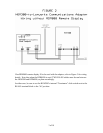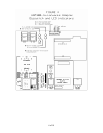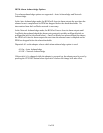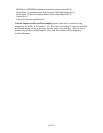7 of 18
Configuring the HGM300 with RDM800 or Laptop PC
The only HGM parameters that are changeable through LonWorks are the alarm
thresholds. Configuring the HGM for refrigerant type and length of tubing for each zone
(zero length to disable a zone) must be done with the RDM800 remote display or a laptop
PC. Refer to the appropriate Bacharach instructions for configuring these items. HGMs
are commonly custom-configured at the factory per the customer’s needs, so field
configuring these parameters may not be necessary.
If configuring the HGM with an RDM800, the communications adapter’s presence will
not affect the standard configuration procedure. If configuring with a laptop PC,
temporarily disconnect the HGM300’s RS-485 cable from the adapter until configuration
is complete and the laptop is disconnected.
External Interface (XIF) and User Resource Files
Each adapter comes with a disk containing an External Interface (XIF) and User
Resource files. The files contain documentation about the network variables contained in
the adapter and how they are used. Most network management software will accept XIF
files. Echelon LonMaker (and possibly others) will accept User Resource files. A subset
of the information in these files is permanently stored in the adapter itself and may be
queried over the network once the network management software is aware of the node’s
presence.
Identifying the HGM300-LonWorks Adapter on the Network
The adapter can be identified on the network in three ways:
1. If the network management software supports identification by Service Pin, the
adapter’s Service pushbutton (directly above the FT-10 twisted pair terminal block)
can be pushed when the network management software requests it. This causes a
“here I am” message to be broadcast which should be received by the network
manager.
2. The adapter’s Neuron chip ID number can be entered manually into the network
control PC or handheld tool when requested by the network management software.
The Neuron chip ID number is written on the piggyback LonWorks control module in
the format XX-XX-XX-XX-XX-XX.
3. If the network management software is capable of finding unconfigured nodes
automatically, the Wink command can be sent to the ID of each unconfigured node.
Then the nodes can be physically checked to see which node corresponds to which
address. When the adapter receives a LonWorks Wink command, it flashes its 1, 2, 5,
and 6 Status LEDs in unison for approximately 15 seconds.


















